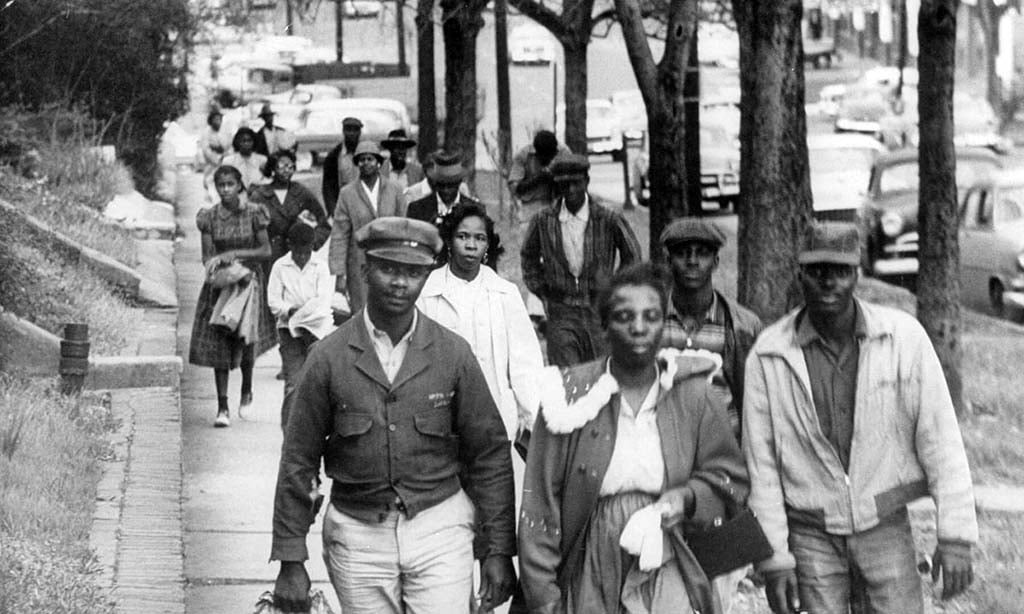The Logistics of the Montgomery Bus Boycott

The bus boycott in Montgomery, Alabama began on Monday, December 5th, 1955 and ended on December 20, 1956 — 381 days during which a huge population had to commute to work, shop, socialize, and run errands without using the city’s public transit system. Obviously, not all of them had cars of their own or could rely solely on their feet or bicycles. They needed organized transport.
The bus boycott produced well-known heroes like Rosa Parks and Martin Luther King, Jr., and a Supreme Court decision prohibiting segregation on public transit, but it also was a product of grassroots organization, an exercise in logistical planning as well as party discipline. How did they do it?
Blogger Samantha Shain has gathered a few threads from books at her site The Data Are All Right (I found Samantha’s post via a tweet by Elizabeth Wrigley-Field.) Here are some highlights:
At least 29 women worked as regular carpool drivers or dispatchers. Ann Smith Pratt, a hairdresser, was the chief dispatcher. She worked the ham radio directing taxi drivers and the church station wagon crew to urgent pickups at 32 designated sites. (At the Dark End of the Street, p. 120, by Danielle McGuire)
[Rev. Benjamin J Simms] set up three repair shops, designated official gas stations, instituted a uniform pay scale for drivers and a system for keeping track of them, oversaw dispatchers working around the clock, and demanded meticulous record keeping. (Daybreak of Freedom, p. 13, by Stewart Burns)
Dr. King wrote about some of these logistical difficulties in the local papers; they were made even more difficult through the counter-organization of the boycott’s opponents.
The newest and most recent of the attempts to end the protest has been effected through insurance companies, which for some strange reason have cancelled the insurance policies on all but seven of the 24 church station wagons. Whether pressure has been put upon the companies to force the cancellation, no one knows, but on Saturday Spetember 8, the automobile insurance companies annoucned that they “could nott take the risk” and cancelled the policies. Thus, seventeen station wagons have been out of operation since then. Efforts are being made to find “companies which will take the risk,” so that these carriers can resume operations. (quoted in Daybreak of Freedom, p. 395.)
Ann Smith Pratt and Reverend Simms are examples of the other heroes of the Bus Boycott, the ones who never became national names but without whom it simply would have failed.
Infrastructure doesn’t just happen; it is a manifestation of how a community takes care of itself, or (too often), how it cares for some but not others. As my friend Deb Chachra persuasively writes, infrastructure is care at scale.





Stay Connected